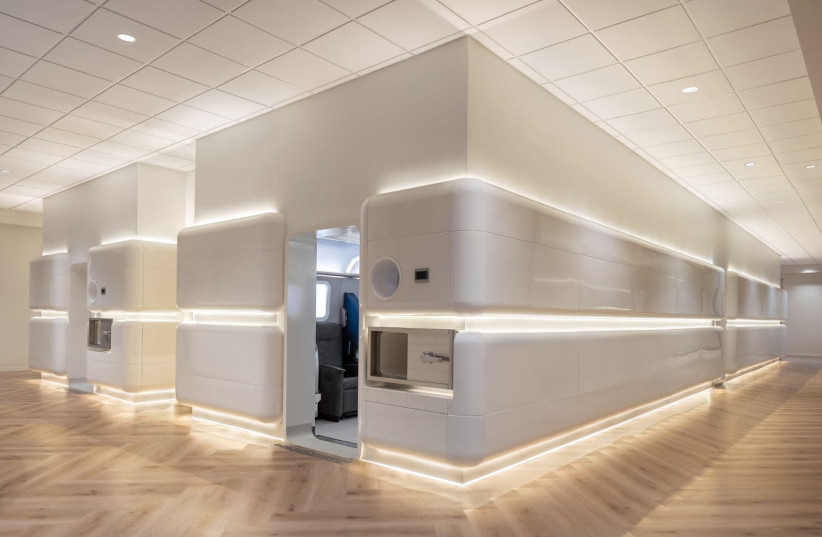Israeli scientists say they have managed to successfully reverse the biological
aging process – using only oxygen.
Recent
research, led by Tel Aviv University’s Prof. Shai Efrati, together with a team from Shamir Medical Center, found that when
healthy adults over the age of 64 were placed in a pressurized chamber and given pure oxygen for 90 minutes a day, five days a week for three months, not only was the aging process delayed - it was actually reversed.
Specifically, the study, which was published in the peer-reviewed journal Aging, focused on whether the process could reverse two key indicators of biological aging: the shortening of DNA telomeres and the accumulation of resultant senescent cells.
A telomere is the end of a chromosome. Telomeres are made of repetitive sequences of non-coding DNA that serve as bumpers to protect the chromosome from damage during replication. Every time replication happens, these bumpers take a hit, making them shorter and shorter. Once the telomere reaches a certain length, the cell cannot replicate anymore, which leads to senescent cells: aging, malfunctioning cells that ultimately lead to cognitive or other age-related disabilities, and even diseases, such as cancer.
Some 35 adults over the age of 64 were involved in the study and were administered hyperbaric oxygen therapy (HBOT) utilizing 100% oxygen in an environmental pressure higher than one absolute atmospheres to enhance the amount of oxygen dissolved in the body's tissues.
Every 20 minutes, the participants were asked to remove their masks for five minutes, bringing their oxygen back to normal levels. However, during this period, researchers saw that fluctuations in the free oxygen concentration were interpreted at the cellular level as a lack of oxygen – rather than interpreting the absolute level of oxygen.
In other words, repeated intermittent hyperoxic (increased oxygen level) exposures induced many of the mediators and cellular mechanisms that are usually induced during hypoxia (decreased oxygen levels) – something Efrati explained is called the hyperoxic-hypoxic paradox.
“The oxygen fluctuation we generated is what is important,” he told The Jerusalem Post. “During this process, a state of oxygen shortage resulted, which caused cell regeneration.”
 The inside of a hyperbaric oxygen therapy chamber at Aviv Clinic in Florida (Credit: Aviv Clinic)
The inside of a hyperbaric oxygen therapy chamber at Aviv Clinic in Florida (Credit: Aviv Clinic)
The practical ramifications include improvements in attention, information processing speed and executive functions, which normally decline with aging and about which more than 50% of people over the age of 60 express concern. According to the study, the changes were equivalent to how the participants’ bodies were at the cellular level 25 years earlier.
“We are not [just] slowing the decline - we are going backwards in time,” Efrati said.
Efrati has been studying the aging process for a decade and runs the Aviv Clinics in Florida. This study, he said, is proof that the cellular basis for the aging process can be reversed, adding that it “gives hope and opens the door for a lot of young scientists to target aging as a reversible disease.” It could also enable doctors and scientists to find a way to monitor telomere length and develop medications that could help them grow back when needed.
Will it make people live longer?
The effect’s duration is yet to be determined in the long-term, Efrati said. But “probably yes. We know that people with shorter telomeres die earlier, so it makes sense.”
One disadvantage of the study was its limited sample size.
Efrati added the experiment was conducted using a scientific, monitored HBOT chamber and people should not try this at home. He said, “There is a lot of junk out there” claiming sacs inflated with air are hyperbaric treatments. “This is not what is being used in the studies, it is not effective – and moreover, it could be dangerous.”


